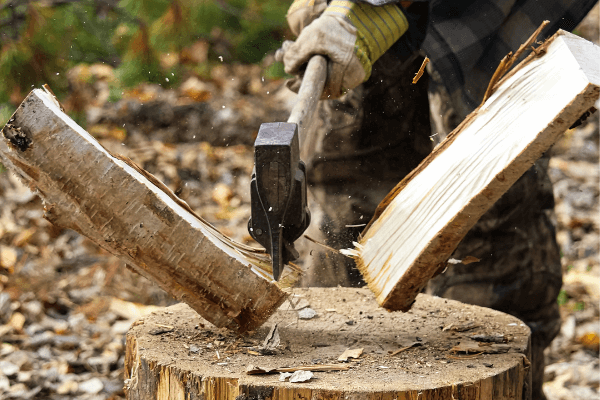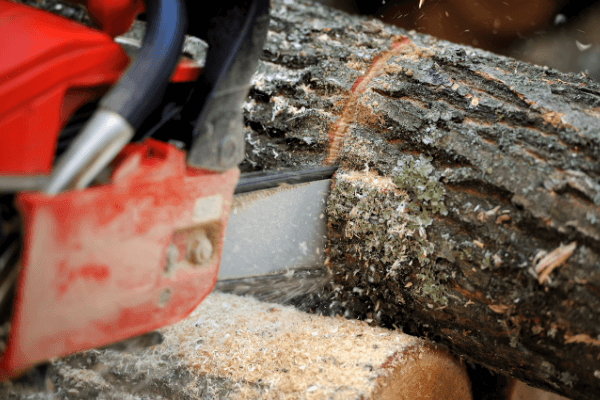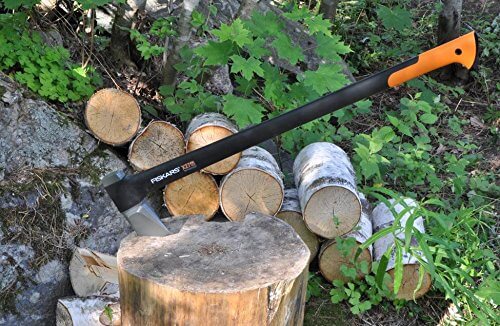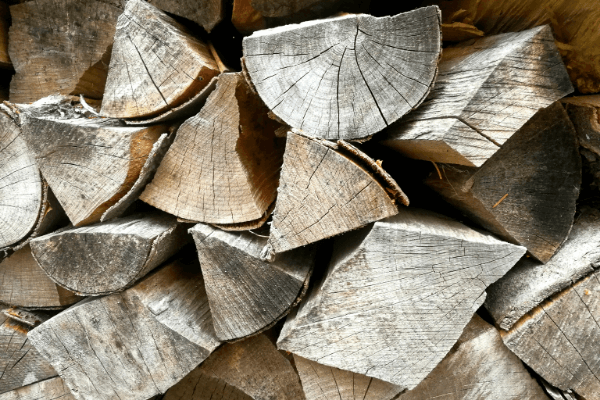- Home
- Splitting Firewood
- How to Split Wood
How To Split Wood
This post may contain affiliate links so I earn a commission.
Learning how to split wood properly can save you a lot of time, frustration and energy.
Although I find splitting firewood enjoyable, at times it can be a daunting task, especially if you have a huge pile to work on.
So, to conserve energy and make swinging an axe or maul as safe as possible, there's a few important tips and techniques to consider.
Splitting firewood serves two purposes.
First, by splitting large chunks of firewood (known as rounds) into smaller sizes, they're a lot easier to handle which reduces fatigue and the possibility of injury.

Second, splitting the firewood allows air to penetrate the wood from all sides which helps the wood to properly season.
The smaller you split the wood, the faster the wood will dry out and the faster it will burn.
Consider this analogy.....if you took a wet towel, rolled it up and just let it sit for a while, the inside of the towel would still be wet for days if not weeks.
Now, if you took a wet towel and laid it flat where air could penetrate the towel on all sides, it would dry quickly.
The same concept works with firewood.
Just keep in mind there's a happy medium with splitting firewood.
You don't want to split all of your firewood into small thin pieces because the fire will burn too hot and fast.
Small thin pieces work great for kindling but in order to achieve a hot fire that will last for hours, split most of your wood into sizes that are similar to a loaf of bread (just as an example).
How To Split Wood - What's The Best Way
Recently a visitor asked this question which address how to split wood properly:
"What is the maximum and minimum length of wood that I can split manually?
I just had several trees felled at my home and want to burn the wood.
The wood is presently in lengths of about 1 meter to 1.5 meters and the diameters range from a few inches to around 2 feet maximum.
The wood consists of birch, pine, elm and oak.
I am a novice in this area and I'm not sure what I should do and in what order?"
- Tim, United Kingdom
Although firewood can be cut into just about any length, the most common size is 16 inches long.
The longer the wood is cut, the harder it is to split.
Since you're just starting out, I would cut the wood into 12-14 inch pieces which would make them even easier to split and handle.
I would split anything that is larger than a baseball.
You should cut the wood first, then split it, then stack it.

There's really no minimum size for firewood.
Most people cut firewood to fit their wood stove making it as long as possible, while still fitting easily inside the stove.
To split the wood, I suggest using a splitting axe rather than a maul.
A splitting axe is lighter, easier to swing and it won't wear you out like a heavy maul will.
The Fiskars X27 Super Splitting Axe is a remarkable axe.
It has a indestructible handle that's backed by a lifetime guarantee, you can sharpen the blade if needed with the Fiskars Axe and Knife Sharpener, and the wood just explodes apart when you strike it.
Many times, the axe will split a round with a single blow.

When learning how to split wood, you should consider these important details which will make the job a lot easier:
- Place the wood on a splitting block (which is typically just a large piece of wood). A splitting block keeps your axe out of the dirt and it prevents the ground from absorbing the energy as the wood squishes into the dirt.
- Understand that knots, branches and crotches are the hardest areas to split.
- After a few logs you should be able to "read the wood." Look for natural cracks or weak spots that will make the wood easier to split.
- Strike the log near the outer edge, especially on large pieces. This will help develop a crack in the wood that you can work on until the wood splits.
- Keep your feet shoulder width apart and focus on hitting an exact spot.
- Softwoods like pine will split easier than hardwoods like elm or oak.
Although pine, birch and oak (probably in that order) are decent to split, elm is a very stringy wood and can be a nightmare to split by hand.
The wood wants to tear and not split apart.

Once the wood is split, stack it on an elevated surface such as pallets or 2x4 runners.
When elevated, the wood won't suck up ground moisture and it allows the air to circulate all the way around the wood helping it season faster.
Firewood should be allowed to season for about 1 year before it's dry enough to burn.
Seasoned firewood will start to look grey and develop cracks on the ends of the wood.
Oak will sometimes take up to 2 years to season.
Resist the urge to burn wet firewood.
Wet firewood is not only unsafe to burn do to the increased risk of creosote buildup, but it's extremely frustrating and time consuming to mess with wet firewood.
How To Split Wood - Overall
Learning how to split wood properly will save you a lot of time and effort.
Plus, splitting firewood can even be an enjoyable experience.
Take your time, read the wood and before you know it you'll have a large stack of split firewood.

About the Author
Obsessed with firewood, Nick is behind over 350+ of Firewood For Life's articles, as well as countless reviews, guides and YouTube videos to help readers like you reduce heating costs and create the perfect fire.


